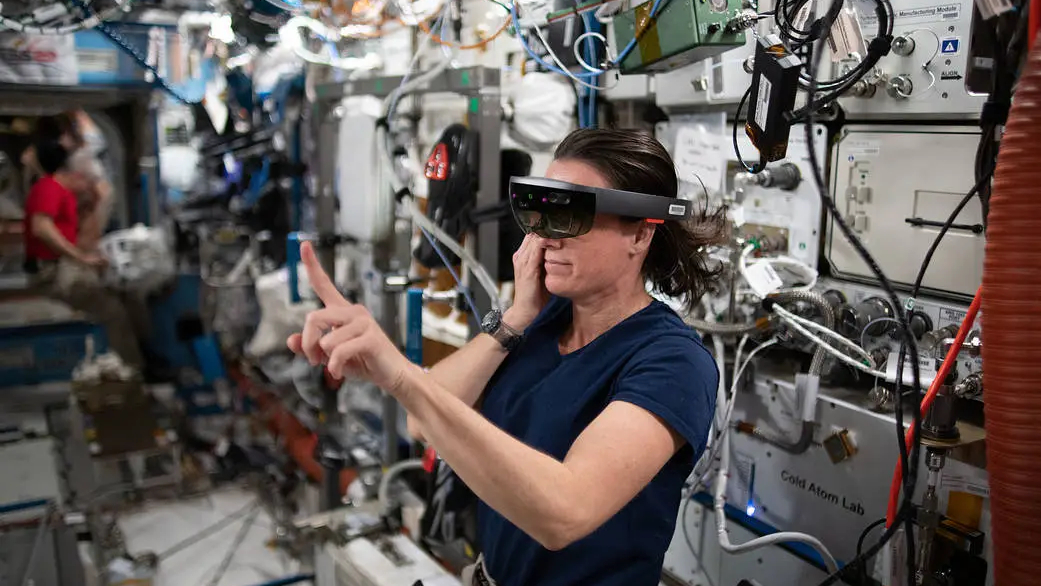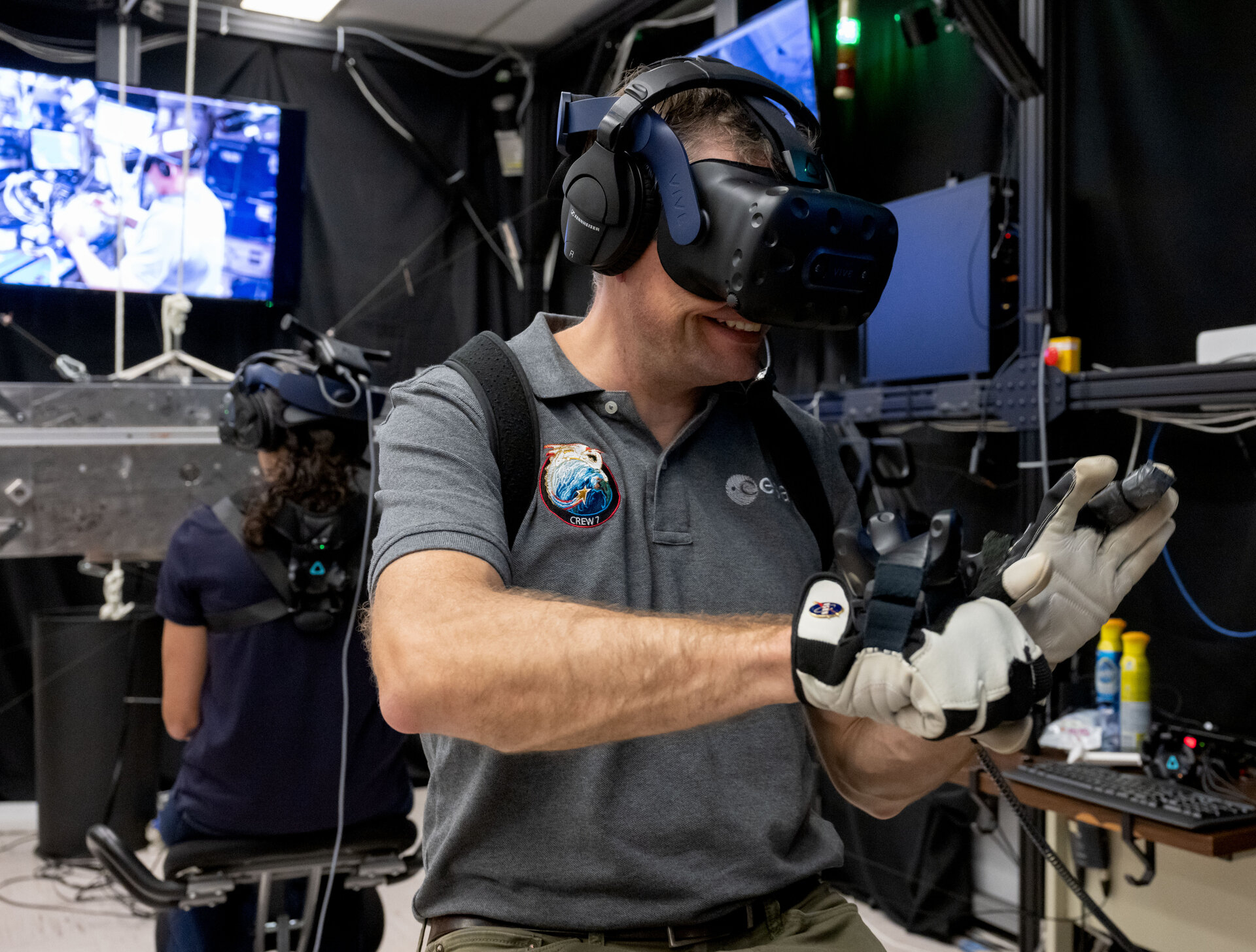
Space station astronauts will soon be able to enter virtual reality to help stay mentally healthy away from their home planet.
An HTC Vive Focus 3 virtual reality (VR) headset will fly to the International Space Station (ISS) on a SpaceX cargo ship launching no earlier than Thursday (Nov. 9), health care platform company XRHealth announced on Nov. 2. You can watch SpaceX's Dragon cargo ship launch live here at Space.com, via NASA Television.
Once hooked up for space experiments, the headset will "treat astronauts for mental health conditions" associated with living in space for long periods of time, which can include feelings of isolation, stress and confinement. European Space Agency (ESA) astronaut Andreas Mogensen has pledged to test the headset during his half-year mission, which includes commanding the ISS.
Related: Best VR headsets 2023: Explore the cosmos and blast aliens from the safety of your home
ISS astronauts live in what are considered isolated, confined environments (ICE); simply put, these are zones where people work in operational circumstances in small teams far away from assistance. Examples include research bases in the Arctic and Antarctic, submarines and of course, spacecraft, leading to decades of studies on how best to help personnel in these circumstances, according to a 2021 study in Neuroscience & Biobehavioral Reviews.
Based on their peer-reviewed survey of the field, the authors of that 2021 study noted that teams already properly screened and selected for an ICE mission will have the best outcomes with "leadership, coping and interpersonal skills training … during and after long-duration missions." The study was co-authored by the University of Southern California's Lawrence Palinkas and the University of British Columbia's Peter Suedfeld, two oft-cited authors in the field of ICE who also have done many space studies.
NASA and other space agencies already include numerous tools to help crews with mental health readiness. Astronauts train in ICE environments on the ground that include caves, wilderness excursions and underwater habitats. While in space, astronauts speak with a psychologist at least once every two weeks, according to the Canadian Space Agency. They also have scheduled rest times, regular calls with family and friends and encouragement to pursue hobbies in orbit.
While far from the first headset to fly in space, the new HTC Vive will include a simulator mode "specially developed and adapted to work with the microgravity environment," officials wrote in the statement.
Past VR headsets had a tendency to induce motion sickness due to "multiple challenges around tracking and orientation (such as) jittering, rolling and drifting of the content," as headsets usually use gravity to align the view, according to XRHealth's Nov. 2 statement. The participating companies — which include XRHealth, Nord-Space Aps and HTC Vive — made unspecified changes to this headset to make it work better on the ISS.
Mogensen and other experiment participants will do "in-flight testing sessions comprised of VR video viewing and questionnaires", NASA officials stated of the experiment. The astronauts will do so with an app from ESA called EveryWear, which has been adapted from a previous version that measured food intake.
The results will also be adapted for the general public to aid in stress management , especially for conditions including anxiety, post-traumatic stress disorder and attention-deficit/hyperactivity disorder (ADHD).
Related: Deep space missions will test astronauts' mental health. Could AI companions help?

"Astronauts are essentially isolated during their missions for months and years at a time, and are confined to small spaces with limited contact with friends and family," Per Lundahl Thomsen, chief technology officer at Nord-Space Aps, said in the Nov. 2 statement.
"Creating a virtual platform that addresses their mental health needs while in isolation is imperative for them to maintain a healthy lifestyle when they return," Thomsen added. "We partnered with companies that provide the most advanced technologies that could be adapted for space to provide the most beneficial experience for our astronauts."
Many other VR headsets have flown to the ISS, according to NASA materials. Some of the many applications have included controlling robots, helping with maintenance tasks and training, performing experiments to see how astronaut bodies adapt to space and filming immersive reality videos to share the ISS experience publicly.
If you're looking for a VR headset for your own residence, check out our best VR headset guide. We have tested the major headset platforms for different types of gamers and to suit a range of budgets. Whether you want high resolution, a wireless experience or a budget-friendly option, the guide will cover you.







